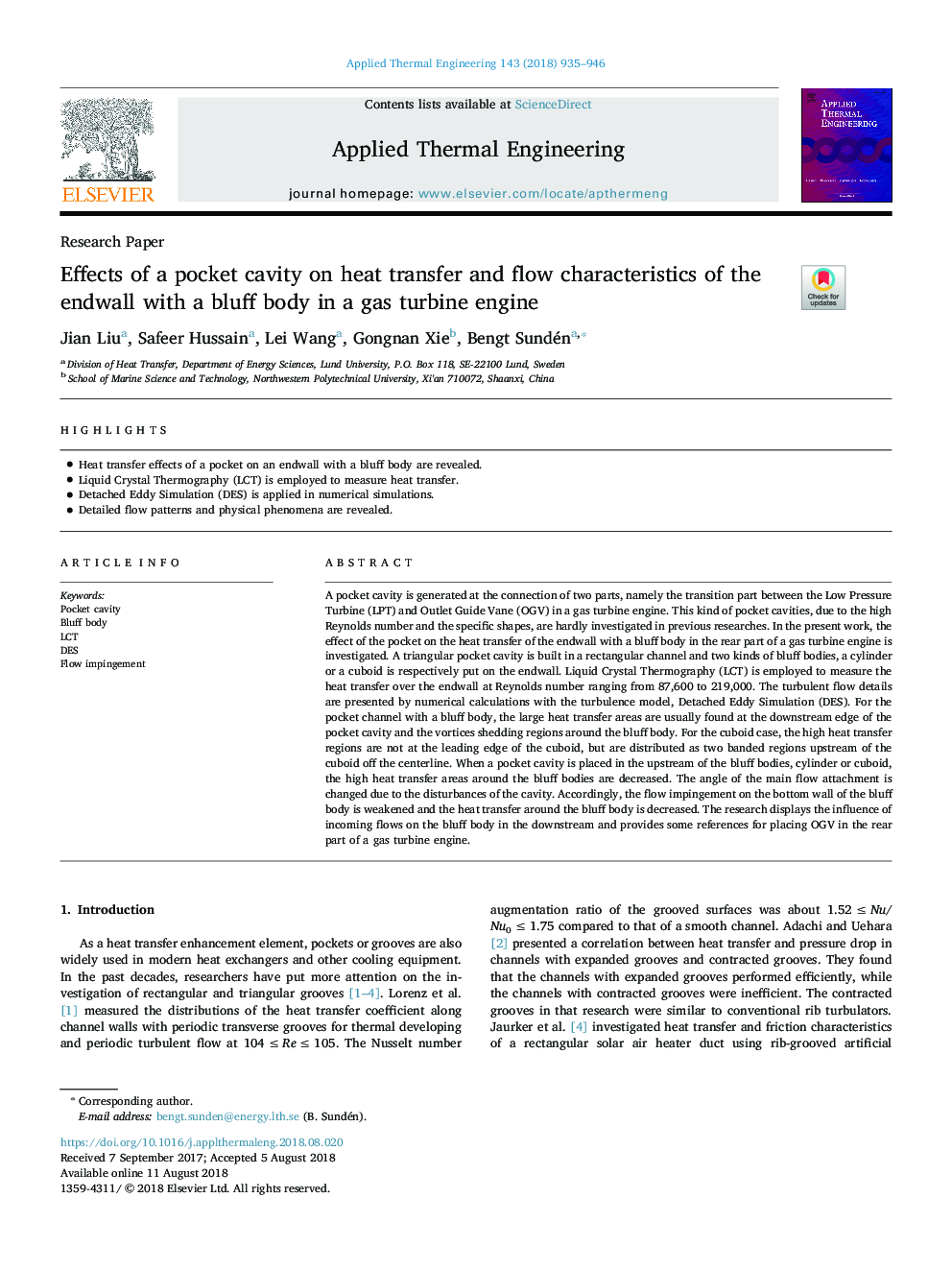| کد مقاله | کد نشریه | سال انتشار | مقاله انگلیسی | نسخه تمام متن |
|---|---|---|---|---|
| 7044793 | 1457086 | 2018 | 12 صفحه PDF | دانلود رایگان |
عنوان انگلیسی مقاله ISI
Effects of a pocket cavity on heat transfer and flow characteristics of the endwall with a bluff body in a gas turbine engine
ترجمه فارسی عنوان
اثرات حفره جیبی در انتقال حرارت و ویژگی های جریان دندانه دار با یک بدنه در یک موتور توربین گاز
دانلود مقاله + سفارش ترجمه
دانلود مقاله ISI انگلیسی
رایگان برای ایرانیان
کلمات کلیدی
موضوعات مرتبط
مهندسی و علوم پایه
مهندسی شیمی
جریان سیال و فرایندهای انتقال
چکیده انگلیسی
A pocket cavity is generated at the connection of two parts, namely the transition part between the Low Pressure Turbine (LPT) and Outlet Guide Vane (OGV) in a gas turbine engine. This kind of pocket cavities, due to the high Reynolds number and the specific shapes, are hardly investigated in previous researches. In the present work, the effect of the pocket on the heat transfer of the endwall with a bluff body in the rear part of a gas turbine engine is investigated. A triangular pocket cavity is built in a rectangular channel and two kinds of bluff bodies, a cylinder or a cuboid is respectively put on the endwall. Liquid Crystal Thermography (LCT) is employed to measure the heat transfer over the endwall at Reynolds number ranging from 87,600 to 219,000. The turbulent flow details are presented by numerical calculations with the turbulence model, Detached Eddy Simulation (DES). For the pocket channel with a bluff body, the large heat transfer areas are usually found at the downstream edge of the pocket cavity and the vortices shedding regions around the bluff body. For the cuboid case, the high heat transfer regions are not at the leading edge of the cuboid, but are distributed as two banded regions upstream of the cuboid off the centerline. When a pocket cavity is placed in the upstream of the bluff bodies, cylinder or cuboid, the high heat transfer areas around the bluff bodies are decreased. The angle of the main flow attachment is changed due to the disturbances of the cavity. Accordingly, the flow impingement on the bottom wall of the bluff body is weakened and the heat transfer around the bluff body is decreased. The research displays the influence of incoming flows on the bluff body in the downstream and provides some references for placing OGV in the rear part of a gas turbine engine.
ناشر
Database: Elsevier - ScienceDirect (ساینس دایرکت)
Journal: Applied Thermal Engineering - Volume 143, October 2018, Pages 935-946
Journal: Applied Thermal Engineering - Volume 143, October 2018, Pages 935-946
نویسندگان
Jian Liu, Safeer Hussain, Lei Wang, Gongnan Xie, Bengt Sundén,
